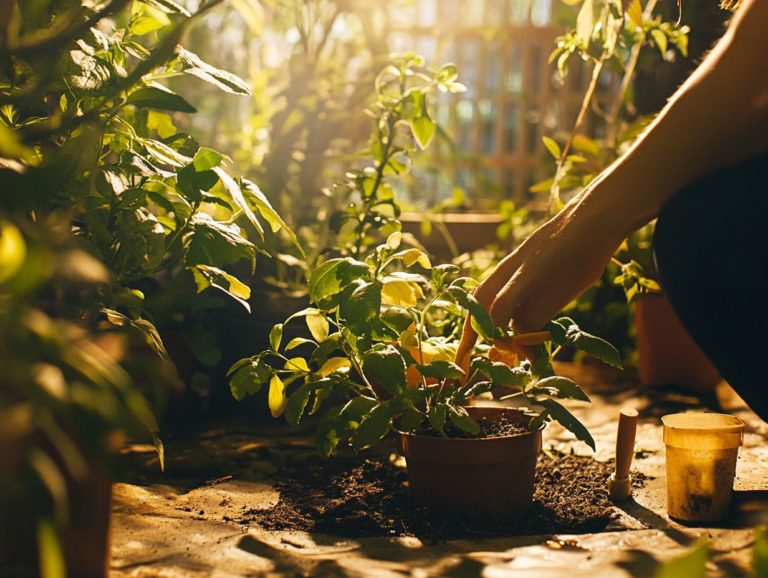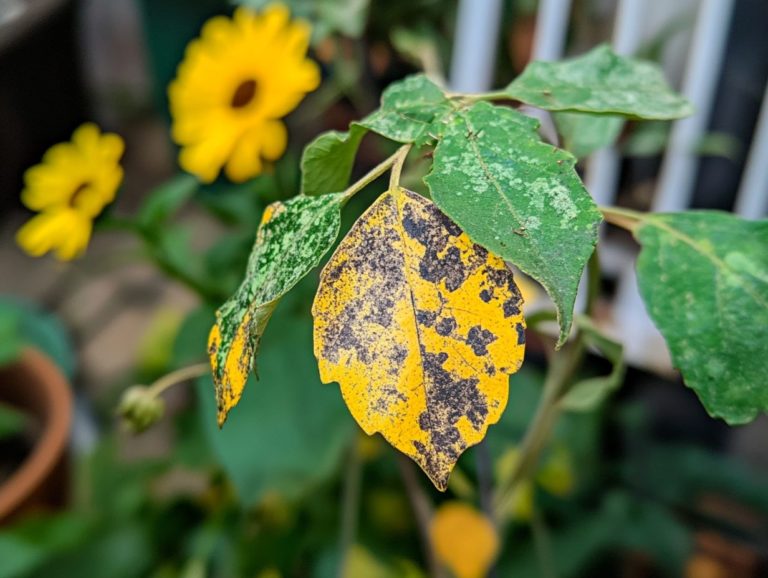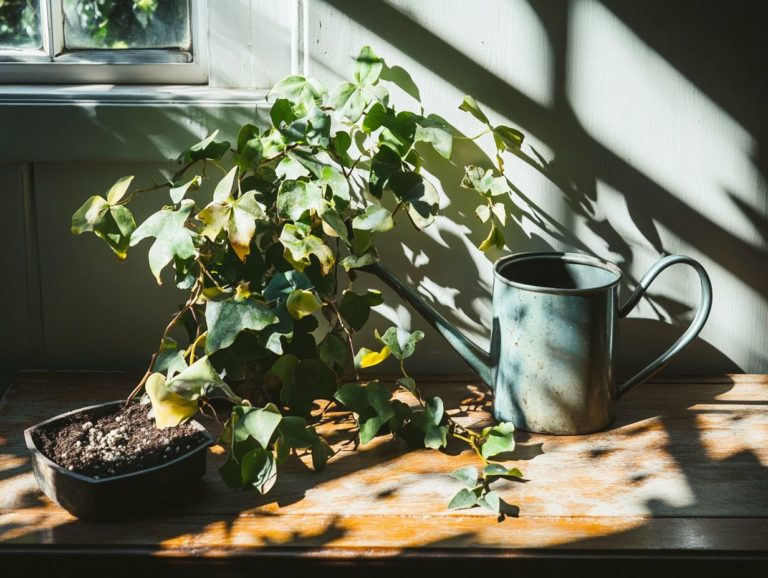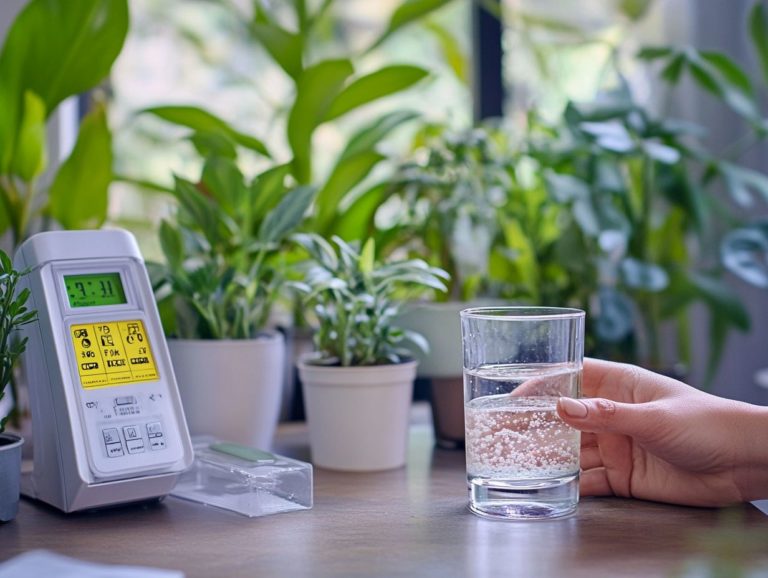How to Fix Root Rot in Indoor Plants
Root rot can be a gardener’s worst nightmare, quietly wreaking havoc on your cherished indoor plants. Knowing the causes and symptoms helps you act quickly and keep your plants healthy!
This guide delves into effective best practices for plant care that can protect your greenery. You ll receive insights on diagnosing and treating root rot, including tips on preventing it, along with practical steps to revive your affected plants.
You will also discover alternative solutions to ensure your indoor garden thrives. Learn how to nurture your plants back to health with proper lighting and moisture levels.
Contents
- Key Takeaways:
- Understanding Root Rot
- Preventing Root Rot
- Identifying and Treating Root Rot
- Reviving Plants Affected by Root Rot
- Alternative Solutions
- Frequently Asked Questions
- What is root rot and why is it harmful for indoor plants?
- How can I tell if my indoor plant has root rot?
- Can root rot be treated and reversed?
- How can I prevent root rot in my indoor plants?
- Are there any natural remedies for root rot?
- Is it possible to save a plant with severe root rot caused by fungal infections or environmental stress?
Key Takeaways:
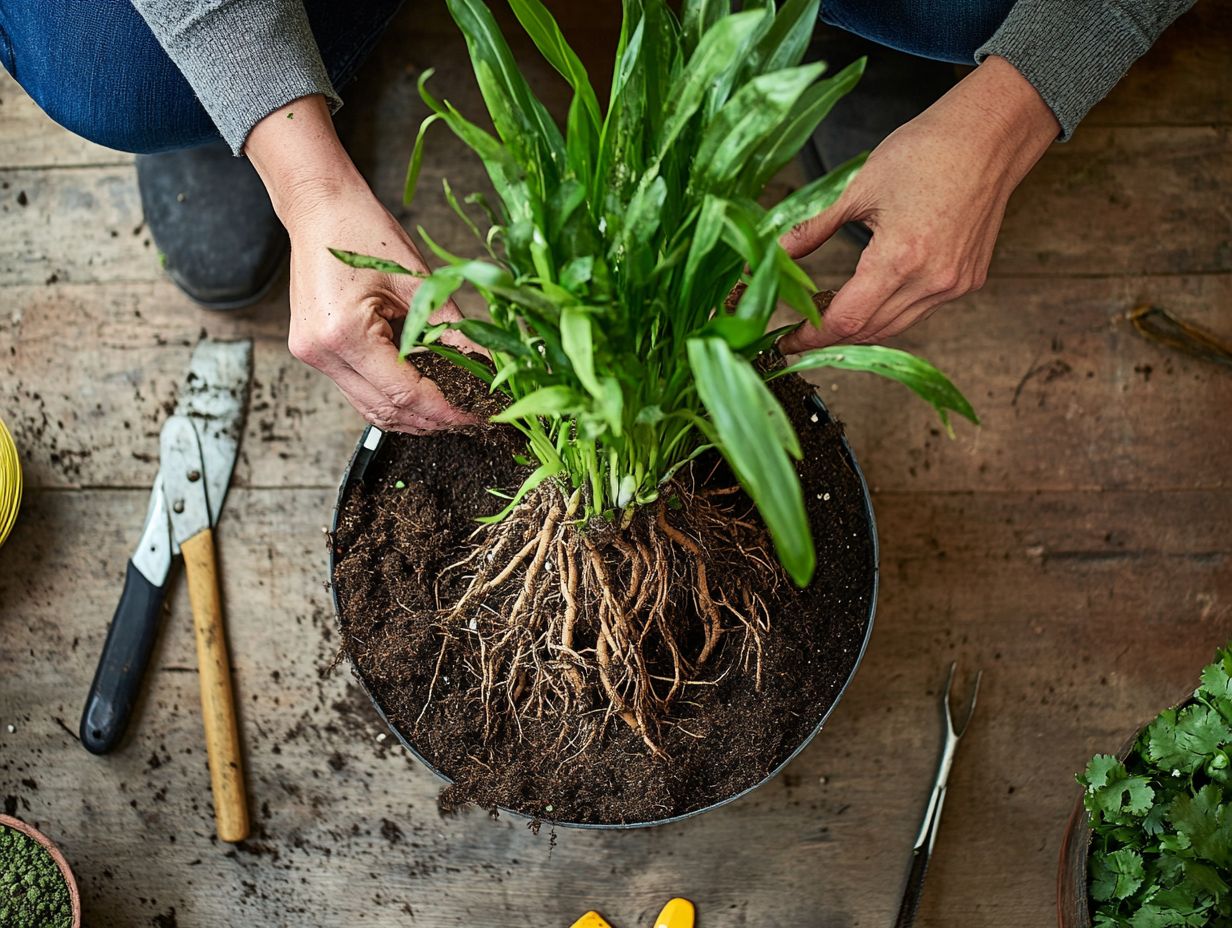
- Proper plant care is key to preventing root rot, which stems from overwatering and poor drainage.
- Early detection and fast action can save your plants from root rot. Diagnose and address the issue by repotting and adjusting watering habits.
- If your plant is affected by root rot or fusarium root rot, you can revive it by following steps for recovery and rehabilitation. Alternatively, consider using other methods such as fungicides, bleach, or natural remedies to combat root rot.
Understanding Root Rot
Root rot is a common yet serious condition that can afflict your houseplants, stemming from various harmful fungi and bacteria, particularly Fusarium, Pythium, and Erwinia, which flourish in overly moist environments.
This fungal infection often causes your plants to decline slowly, leading to wilting leaves, discolored foliage, and eventually, if neglected, their demise.
Environmental stressors like overwatering, high humidity, water stress, and poor drainage play a significant role in the development of root rot. Recognizing these factors is essential for effective management and ensuring your plants thrive.
Causes and Symptoms
The causes of root rot in houseplants often stem from improper care techniques, primarily marked by overwatering or water stress that creates the perfect conditions for harmful fungi and bacterial infections to flourish.
When you give your plant too much water, the soil can stay saturated for too long, reducing the oxygen levels that are vital for healthy root development. High humidity can make matters worse, especially when it combines with stagnant soil, creating a paradise for fungi.
Poor drainage complicates things further. If your pot doesn’t have enough drainage holes or if the soil is too compacted, it can turn into a breeding ground for pathogens.
You might notice some red flags: wilting leaves that hang limply despite adequate moisture, discolored foliage that shifts to yellow or brown, and root decay that often goes unnoticed until it becomes serious.
Recognizing these symptoms early is essential. It allows you to intervene swiftly, giving your plant a fighting chance against diseases like root rot and preventing more severe deterioration.
Preventing Root Rot
To prevent root rot, you must employ proactive plant care strategies that prioritize healthy roots and optimal growing conditions, as well as proper lighting. This approach ensures your houseplants flourish, free from the constant threat of fungal infections.
Start implementing these strategies today to keep your plants thriving!
Best Practices for Plant Care
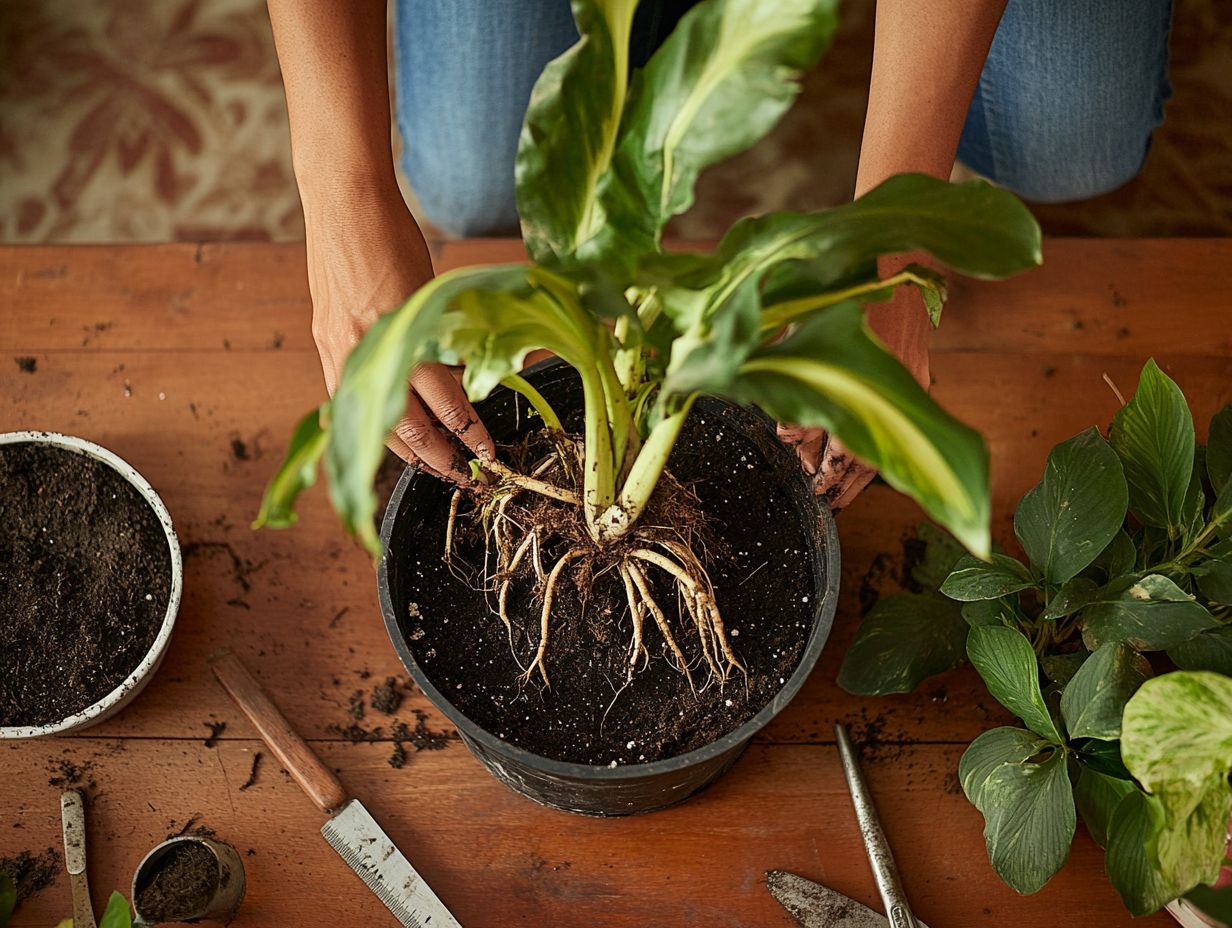
Implementing best practices for plant care is crucial for preventing root rot and promoting the overall health of your houseplants. This ensures they receive the attention they need to truly flourish.
One of the most vital steps is selecting a high-quality potting mix that guarantees adequate drainage and aeration. This helps roots get air and nutrients they need. Regularly inspect drainage holes to prevent excess water accumulation, which can lead to rot. For more insights, check out our guide on how to maintain soil health for indoor plants. A moisture meter can be a game-changer, giving you an accurate gauge of soil moisture levels and enabling you to water at just the right time.
Periodically prune any yellowing or dead leaves. This not only encourages new growth but also enhances the plant’s overall vitality.
Understanding and meeting the specific sunlight requirements for your various houseplants can dramatically improve their health and growth rate. This fosters a thriving indoor garden environment.
Identifying and Treating Root Rot
Identifying and addressing root rot requires a meticulous examination of your plants’ roots. Implement effective strategies like root inspection and proper treatment options to rejuvenate their health.
This careful approach is essential for ensuring successful plant care and facilitating a robust recovery.
Diagnosing and Addressing the Issue
Diagnosing root rot requires a systematic approach. Focus on a thorough inspection of the roots and recognize the symptoms that signal underlying plant diseases or environmental stress.
Start by gently removing the plant from its pot, being cautious not to harm the delicate root system. Examine the roots for any discoloration, mushiness, or unpleasant odors. These can reveal critical signs of decay.
Once you’ve assessed the root condition, address the issue by making essential environmental adjustments. Enhance drainage, adjust your seasonal watering, and moderate your watering schedule. Treatment options might include repotting in fresh, well-aerated soil and using special treatments that help fight plant diseases. For a deeper understanding of issues like root rot, consider exploring understanding root rot and watering practices. This promotes a healthier root system and encourages overall plant vitality.
Reviving Plants Affected by Root Rot
Reviving plants afflicted by root rot requires immediate action. Start with urgent treatments, such as pruning leaves and improving drainage. Follow this with long-term rehabilitation strategies to ensure they flourish without facing similar issues in the future.
Steps for Recovery and Rehabilitation
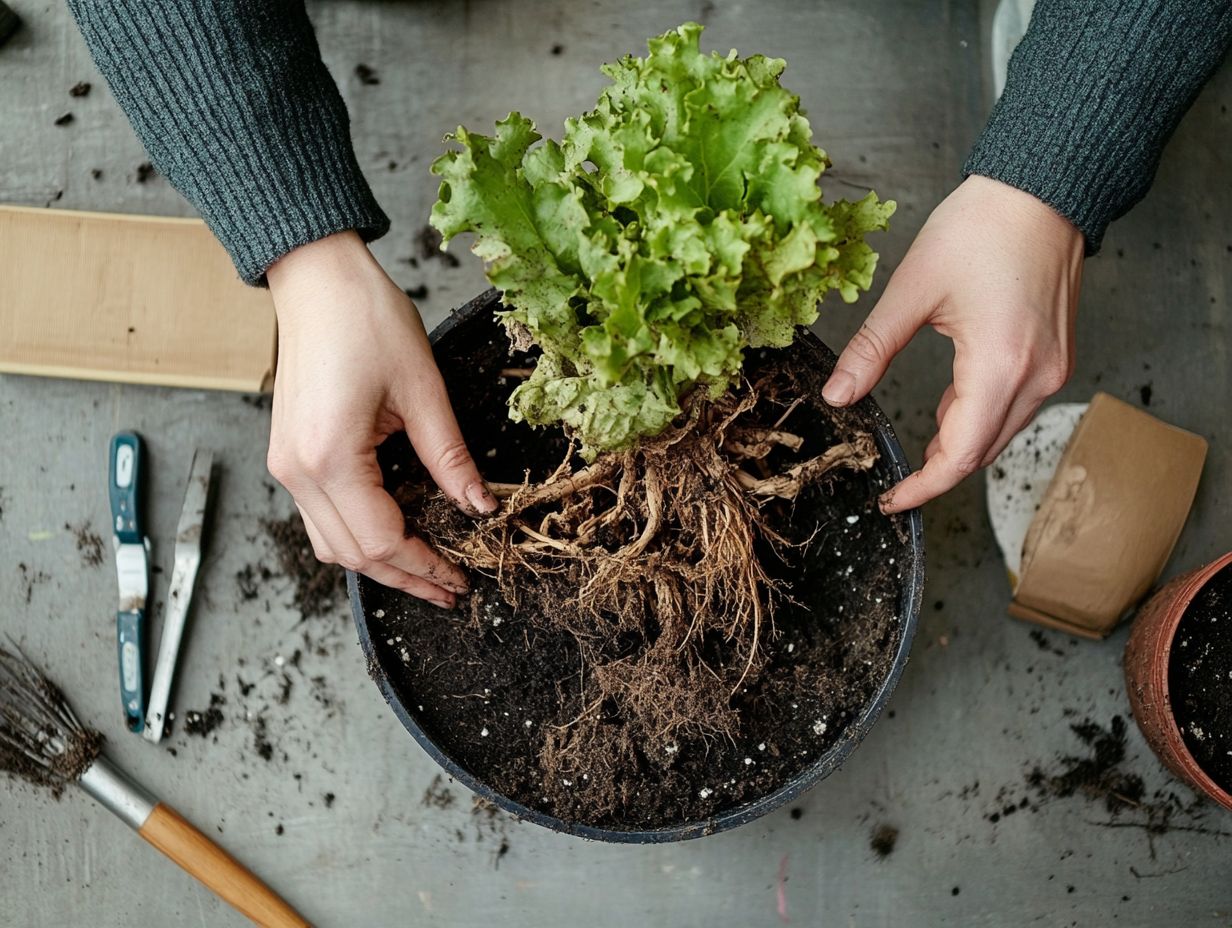
The recovery and rehabilitation of plants suffering from root rot involve essential steps. Start by carefully pruning any affected leaves. This allows you to remove compromised foliage that might hinder new growth, enabling the plant to redirect its energy toward developing healthier leaves.
Next, adjust your watering regime. Let the soil dry out more between waterings to prevent excess moisture that could worsen root rot.
Re-evaluate the environmental conditions to support plant recovery. Enhance drainage, increase light exposure, or adjust humidity levels. By cultivating these conditions, you can promote overall healthy growth, ultimately leading to a flourishing plant.
Alternative Solutions
Explore alternative solutions for addressing root rot, like using fungicides or compost. These strategies can help manage your houseplants, ensuring their longevity even in the most challenging conditions.
Other Methods for Dealing with Root Rot
Explore alternative treatments and drainage solutions to boost your houseplants’ health, especially when dealing with root rot.
Fungus-fighting treatments can target infections and help save damaged roots. Improve drainage with raised pots or by mixing materials like perlite into your soil.
Ensure your plants get ample light and good airflow to create a thriving environment. Check soil moisture regularly with a meter to avoid overwatering.
Frequently Asked Questions
What is root rot and why is it harmful for indoor plants?

Root rot is a fungal disease that causes roots to decay, which can lead to a plant’s death. It stops plants from soaking up water and nutrients, resulting in poor growth.
How can I tell if my indoor plant has root rot?
Keep an eye out for these telltale signs! Look for yellowing or wilting leaves, a foul odor from the soil, and soft or mushy roots.
Can root rot be treated and reversed?
In some cases, root rot can be treated and reversed if caught early enough. First, remove the affected plant from the soil and trim off any infected roots. Then, replant in fresh, well-draining soil and adjust the watering schedule to prevent overwatering.
How can I prevent root rot in my indoor plants?
The best way to prevent root rot is to avoid overwatering. Always check the soil moisture before watering, using a moisture meter if possible. Choose pots with good drainage and avoid heavy or compacted soil. Regularly inspect your plants for any signs of disease or pests.
Are there any natural remedies for root rot?
Yes, natural remedies can help treat and prevent root rot. You can use cinnamon as a natural anti-fungal agent, apply hydrogen peroxide to oxygenate the roots, or introduce beneficial bacteria to improve root health.
Is it possible to save a plant with severe root rot caused by fungal infections or environmental stress?
In some cases, it may be too late to save a plant with severe root rot. Act fast to treat and prevent root rot to avoid irreversible damage. If the damage is extensive, it may be best to replace the plant with a healthy one.

